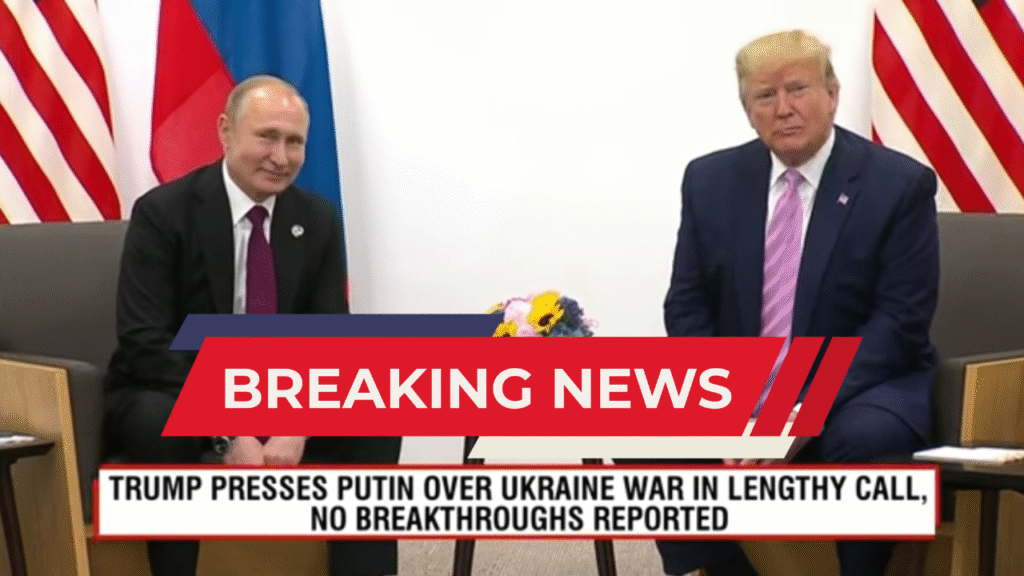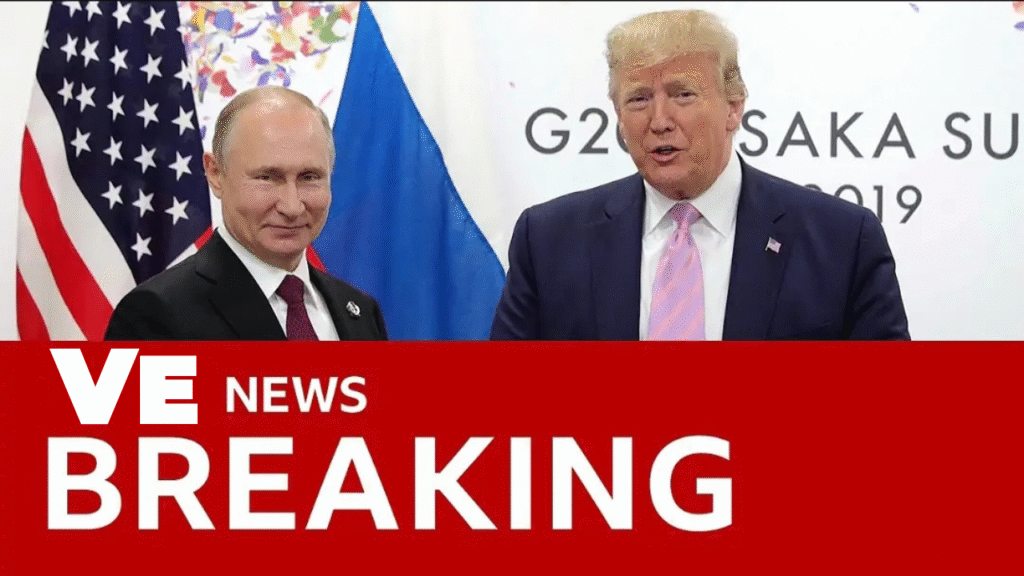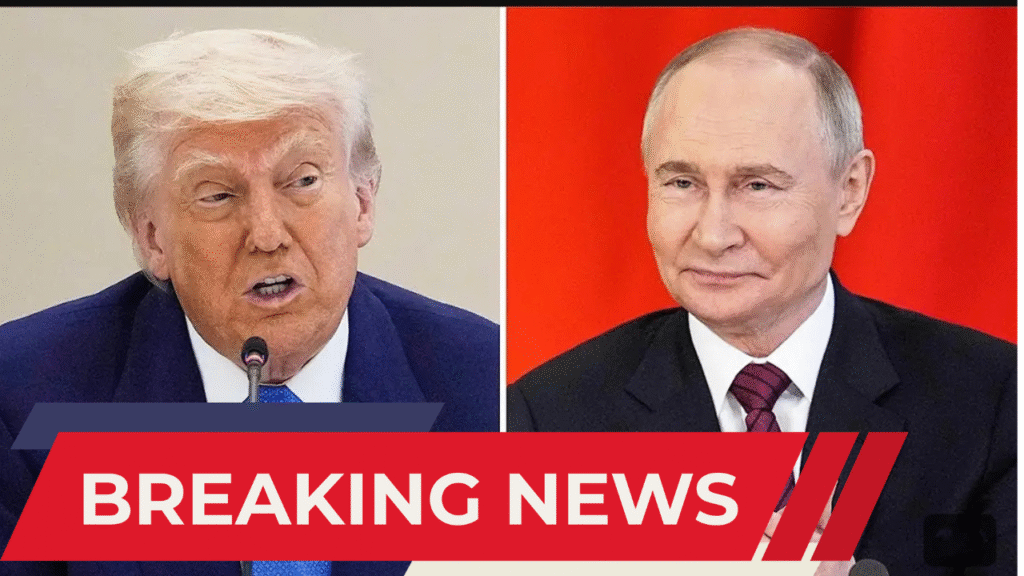Donald Trump And Vladimir Putin: Ceasefire
After a two-hour phone conversation with Russian President Vladimir Putin, U.S. President Donald Trump declared on May 19, 2025, that Russia and Ukraine would begin urgent peace discussions. The Vatican has indicated interest in holding the talks, Trump posted on social media. Putin reaffirmed Russia’s willingness to draft a peace agreement with Ukraine that would include dates and potential resolution tenets. Volodymyr Zelenskyy, the president of Ukraine, has not directly addressed these events, despite reports that he had a brief conversation with Trump before to the discussion with Putin.

The declaration comes after Russia and Ukraine’s first direct peace talks since 2022 in Turkey ended in failure. JD Vance, the vice president of the United States, admitted a deadlock and reaffirmed that if Russia is not truly dedicated to the peace process, the United States might leave it. Trump wants a truce, but he is frustrated with both parties, White House Press Secretary Karoline Leavitt said. Meanwhile, European leaders have called on the United States to back fresh sanctions on Russia. With Russian soldiers still controlling a sizable portion of Ukrainian land, Putin is steadfast in his demands for an end to the conflict in spite of growing pressure.
When Trump demanded that talks begin immediately, there was cautious optimism. He said some progress had been made in talks to put an end to the violence, which he called a “terrible situation.” Russian President Vladimir Putin indicated that he was prepared to implement a ceasefire, but Ukrainian President Volodymyr Zelenskyy stressed the importance of constant international pressure to back diplomatic efforts. The issue has attracted a lot of attention from European nations and international organizations, which has aided in initiatives to strengthen peace through economic pressure and diplomacy.

There are still issues in spite of these advancements. Putin said that Russia’s maximalist objectives—demilitarizing Ukraine and reducing Western influence—remain unaltered and rejected an unconditional 30-day ceasefire. Trump also spoke with a number of European leaders including Ukrainian President Volodymyr Zelenskyy, who praised additional diplomatic efforts.
However, a 30-day ceasefire in the conflict in Ukraine was not agreed upon. Putin rejected the plan, arguing that a future peace pact should be developed instead of the ceasefire that Ukraine had agreed to weeks earlier. Putin said a truce would only be feasible if several outstanding concerns were settled. As a result, the shelling of Ukraine and the war continue. Trump is trying to exert diplomatic pressure by making frequent phone calls to world leaders, such as Zelenskyy, Merkel, Macron, and Meloni.However, Russia is putting forward two demands that the West finds unacceptable: Ukraine must completely remove its forces from the Russian-annexed areas of Zaporizhzhia and Kherson, and Ukraine must reject Western military assistance and any additional troop movements during a truce. Putin claims that although the phone conversation was cordial, no real progress was made.
Separately, following a call with Trump, Ukrainian President Volodymyr Zelenskyy consented to a 30-day temporary ceasefire with Putin. But it was immediately apparent that the three sides had different ideas about what the agreement would cover. The White House claimed that “energy and infrastructure” would be covered, while the Kremlin claimed that the agreement only applied to “energy infrastructure,” and Zelenskyy stated that he would also like to see ports and railroads protected. “Putting an end to strikes on energy and other civilian infrastructure could be one of the first steps towards fully ending the war,” Zelenskyy said. He added that Ukraine had affirmed its willingness to take this action.

According to a White House statement from Secretary of State Marco Rubio and National stability Advisor Mike Waltz, Trump recommended during their talk that Zelenskyy think about granting the US control of Ukraine’s power plants in order to guarantee their long-term stability. According to the statement, Trump informed Zelenskyy that the US could be “very helpful in running those plants with its electricity and utility expertise.”
Citing Russia’s track record of breaking ceasefire agreements, Zelenskyy has voiced doubt about them. He warned against a hasty peace agreement without unambiguous security assurances and sent U.S. President Donald Trump a list of all ceasefires that Russia had broken. Zelenskyy underlined that clear security guarantees and balanced diplomacy must be the cornerstones of any peace effort.
In conclusion, there are still many obstacles to overcome even though the launch of immediate ceasefire negotiations between Russia and Ukraine represents a considerable diplomatic advance. The need for cautious optimism and ongoing international engagement to reach a permanent resolution to the conflict is highlighted by the conflicting perspectives of the parties involved, historical antecedents, and geopolitical difficulties.